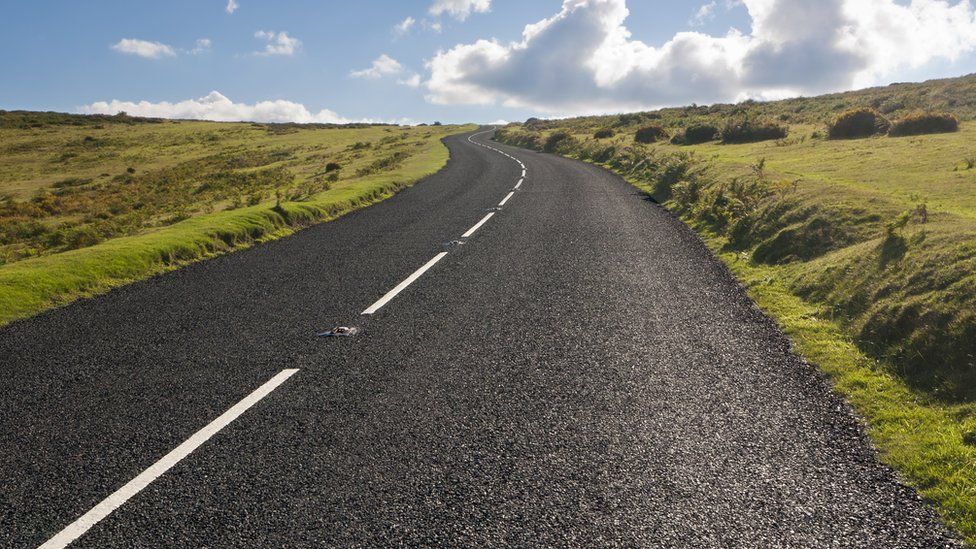Are roads safer with no central white lines?
- Published

White lines along the centre of roads have been removed in parts of the UK, with some experts saying it encourages motorists to slow down. So is it the beginning of the end for the central road marking?
You are driving along the road when the dotted white line that has been your companion - separating your car from oncoming traffic - suddenly disappears.
One theory is that you will slow down, making the road safer.
Speed reduction
The first trials to remove the central white line from roads were held in the UK more than 10 years ago.
Wiltshire County Council stopped repainting some lines when roads were resurfaced between 1997 and 2002. The authority concluded there were safety benefits to removing it on roads with a 30mph or less speed limit.
White lines have since disappeared on about 20 roads in the county.
More recently sections of three roads - one in central London and two in Croydon - had their lines removed as part of a small trial, which began 2014.
Transport for London (TfL) suggested there has been a "statistically significant reduction in vehicle speeds" as a result of removing the central markings.
Speeds reduced by as much as 8mph in one road, it added.
In Norfolk, trials have been held in rural villages and are being expanded into built-up areas.
Tracy Jessop, assistant director of transport at Norfolk County Council, said removing central lines in village locations can reduce speeds and influence drivers' behaviour.
"In most cases we've noticed some positive impacts on the road network. There has been reductions in speed," she said.
Ms Jessop added experiments have been extended to roads with cycle routes that cross cities.
'Element of uncertainty'
So why do people slow down when there is no white line?
"Drivers change their behaviour because they no longer feel that they have their own lane, so they tend to be more attentive, more cautious, and that does reduce the speed limit," said Ms Jessop.
"It does also reduce their journey time because they all become a little bit more aware of people around them and that has been very helpful also for casualty reduction."
A report by TfL on the trial in London suggested white lines gave drivers a "psychological sense of confidence".
One theory, it added, was that removing the line introduced "an element of uncertainty, which is reflected in lower speeds".
Alan Bristow, director of road space management at TfL, said the trials in London were still being "monitored closely to understand the longer-term effects".
He said the results had been "positive", but added: "There are no plans for any widespread removal of road markings."
'Absurd, barmy, crazy'
Edmund King, president of the AA, said he had asked followers on Twitter whether central white lines should be removed and people had told him the idea was "absurd, barmy and crazy".
Mr King said faster roads "definitely" required central lines, adding that new cars fitted with lane departure systems also required white lines.
He said schemes could work on "smaller, quieter roads", but warned geographical differences could be "confusing to road users".
He said the concept of "shared space" on roads comes from Dutch engineer Hans Monderman, who removed traffic lights, lane markings and even kerbs in some towns and cities.
"In medieval Dutch villages, with little through traffic, it can work well and pedestrians and cyclists can interact with drivers," Mr King said.
But he added: "It depends on the road whether it will work or not."
Neil Greig, director of policy and research at the Institute of Advanced Motorists, warned highways authorities "have to get the balance right".
"Most deaths in the UK take place on rural single carriageways and white lining is a key tool in the road designers' armoury and should remain as an option to treat routes with a poor record," he said.
"Throw in the need for new connected cars to be able to read the road and the vision needs of an ageing driving population and the case for white lines is still very strong."